The Browned World
No. 139
The most tangible sign of life at the end of this long, brutal summer was the kitchen counter attack of flying fire ants that began my day Wednesday, as I cleaned my coffee cup and prepared to make lunch for our daughter on her first day back to school. I did not notice the ants until I had set the cup in the drying rack, felt the burn, and looked down to see them all over my hand and arm. Then I looked at the sink, and saw an even bigger number, hundreds, maybe thousands, an estimate like trying to guess the jellybeans in the jar. And when I opened the cabinet under the sink to find a spray, there were even more, all up and down the sides, with more coming in through the aperture where the PVC penetrates the Ikea particle board, beyond which lay the darkness.
I killed them all, as best I could, with a menthol concoction I transferred to an emptied spray bottle of 409, in a scene like the one I always imagined would be the ending of the Ballardian version of our experiment in making a truly feral house, one in which we invite the other species to share our domus. Man versus nature crossed with man versus house. At least I did not have to break out the backpack propane torch to finish the job. The natural history significance of such an infestation—the hordes of sexually programmed little males not just grounded but underground when they should be airborne, chasing the young new queen, at the end of another hot and rainless week—remains a mystery. A failure to launch, perhaps, brought about by the failure of the seasons to follow the patterns and parameters for which the ants have evolved.
It’s hard to convey just how intolerably hot and dry the summer was here in Austin. This tiger swallowtail I encountered on our patio on the last day of July, taking a morning drink from the dirty little puddle of water that drained off our green roof after the drip irrigation ran, seemed to capture some of the essence, in the desperation evidenced by its choice of water sources and the hard season evidenced by its damaged wings. It could still fly, and when it was done drinking it moved on to find the sparse summer flowers in bloom on our nearby roof. Like finding a fairy back from the war, the intensity of the struggle reflected in its injuries amplified when you remember that its lifespan is 1-2 weeks.
Local sources often compared this summer of 2023 to the summer of 2011, the hottest and driest of memory. We remember that summer well, as our house was under construction, making us secretly happy at the absence of any rain days interrupting work. We were living in the little cottage we had rented next door, spending long nights on the patio talking, drinking, and soaking up the sonic wonder of life along the river behind the industrial park—non-stop frog song occasionally interrupted by the skronks of herons and the howls of coyotes calling back to the police sirens. The river is quieter now, the chorus of amphibian life mostly gone. The weather this summer, with six weeks of temperatures well above 100°, and more than sixty days above 105°, all of them uncomfortably humid, makes you wonder how any life can endure the relentless sun.
In the six weeks since my last post, I’ve been on deadline revising my new book, notes about living in the American edgelands and what it teaches you about nature, climate, and the future. I write in the old Airstream trailer we bought as extra space when we were building the house, an aluminum tube that, once the sun creeps past mid-day, can only ever be made twenty degrees cooler than the outside. It’s warm in here even when I turn the lights on a little after 4 a.m., and by late afternoon, even with the supplemental portable A/C installed at the desk end, its exhaust vent jammed through a jury-rugged portal I made from an old service hatch, a piece of cardboard and a whole lot of duct tape, the temp on the wall thermometer pushes the mid-90s.
Somehow, with the fan pushed right up to my chair, the humidity super low, and the shade, I convince myself it’s tolerable, and keep cranking. Maybe it’s a good thing for the book, to be writing about our real world trajectory in conditions that feel uncomfortably close to the dystopian near futures of my fictions.
As I worked here over the past six weeks, I could hear the monk parakeets in the branches of the gnarly old mesquite that provides the only shade above the trailer. They come around for the seed pods when they fruit out in the back half of summer. They crack the long fleshy husks open, eat the seeds that are like sweet peas, then toss the empties onto my roof like the dudes who toss crumpled cans of Bud Lite from passing cars. Naturalized immigrants from South America, not unlike my in-laws, building their multifamily nests in the cell phone tower behind the 7-Eleven and light posts of the ball fields across the river, the parakeets feel like a portent of the ecological future. Especially when you come to appreciate, as I did over the summer, researching the arboreal clues in the landscape around us, that the mesquites are designed to be eaten by animals who became extinct not long after the first humans showed up on this continent.
Even the native species seem altered this summer, adapting to a different climate than the one they evolved for. The Alamo vine and mimosa bloomed early, and not as pink, their color washed out, like they were painted with dirty water color water. The lizards and grasshoppers all look brown instead of their usual green, which may be a chameleonic adaptation to the premature dormancy of the foliage, or some deeper reflection of the environmental conditions. The chile pequin came in despite the absence of rain, but with sparser fruit that is being quickly devoured by the birds. I’ve seen very few swallows, something I would be inclined to blame on the paucity of mosquitoes, but the bats and the nighthawks were out there in the August sky, buzzing over our green roof right before sundown.
We even had a new species drop this summer. Weird black squirrels that appeared, first around my trailer, and then scrambling in and out of the concrete blocks stacked up in our yard as we build a little guest house Agustina designed. They are much more wary of humans than our usual tree squirrels, and at the same time more curious, at least when they can watch us back from a safe distance. Texas rock squirrels, it seems, Otospermophilus variegatus, which are common in the hot dry territories of West Texas, but much less common here on the other side of the I-35 corridor, which seems to be the easternmost edge of their range. A ground squirrel that can climb well, and whose gestation period remains unknown to science, our pair seems to have made its home underneath the shorty shipping container we use as our garden shed. In the morning they can often be seen enjoying the unfinished roofline of the casita, lending it a welcome ferality before it’s done.
The barred owls have been close by as well. Maybe they always are, and I have been able to witness them more often because I have been getting up so early. Three days straight during the week of the new moon, I heard them closer than I have ever heard them. Once in a tree right outside our gate as I opened it, so close it felt like I could reach it. Another morning, in the mesquite, and when I looked in the darkness I could see it. The third morning, a Saturday, when I stepped out of the trailer for a break at a quarter after six, I heard weird animal noises coming from the street, not the woods. And not the usual four-note hoots of the owl. Something higher pitched, more abrupt and arrhythmic, like cries, a little scary.
I walked in the direction of the sound, along the chain link that fences in the industrial lot across the street, here at this dark corner where two streets dead end. Then before my eyes two big owls flew across the street, alighting in the tall sycamore above the loading dock of the door factory. I called to them, in the imitation I have learned, which sometimes works in the woods, but they knew better than to reveal their location to me with a reply.
In the daytime, as the heat dialed up in the long month of two full moons, I often saw skunks out foraging in the open. First in the park across the river, then in the preserve closer by, and then right in our front yard. Friends and neighbors reported similar sightings of these normally nocturnal creatures. Maybe the heat is keeping us and their usual predators away during the day. Or maybe the foraging at night is so challenging that they need to keep at it after sunrise, when the diurnal critters emerge.
On our roof, by the front steps, a lone primrose bloomed in August, months after it’s supposed to, confirming the confusion. The blue moon brought the possibility of cool, and the first day in months that didn’t blow past 99°F. Then I remembered the yellow-crowned night heron I had seen on a late afternoon walk in the shade of the woody path along Shoal Creek as it cuts through the west end of downtown, standing there on a concrete block poking through the stagnant water filmed over with the green growth of unhealthy heat, adapted to life in the shadow of high-rise condominium towers occupied by limited liability companies and their pet humans.
I’ve been thinking a lot this summer, as I try to stick the landing on the book I’ve been writing over the past year, about how the damage we see in the natural world around us is a mirror of the damage we feel inside ourselves, when we are being honest. Not just the way a butterfly with broken wings, a grasshopper that’s lost a leg, or a mangy coyote lamely limping past the chainlink as it tries to trick its way into one more meal, can remind you of your own scars, physical or emotional, that you carry with you through life and learn to deal with. At a deeper level, witness of animals figuring out how to survive in the urbanized world we have made for them can remind you how none of us are really made to live this way.
If you go for a walk in an empty lot at the edge of town, and see antlers in motion across the expanse of tall grass, or find the wild chiles or berries fruited where the birds shit their seed along the fenceline, you might remember that what you are made for is not the repetitive tasks of specialized production we call work, but for hunting and foraging to take from nature what you need. We are made to be outside more than inside, living in the world, taking care of each other.
People like to talk about the evils of capitalism, but that easy gripe doesn’t really get to the heart of the matter, which reaches back to the design flaws of the political economy that emerged from the first permanent human settlements, when we mastered agriculture, started fighting over who got to control the accumulated surplus, and forcing our neighbors to do the work to make more. The distance from the first grain silos long gone to ruin in the desertified former wetlands of southern Iraq, and the cloud computing factories of the new office buildings in whose shadow that heron hunts, is not really that far.
The resilience of the wild animals that persist in the margins of our dominion reminds us of what we are capable, too. They may not be able to liberate us from work, but they can remind us of our own true natures, and help us find momentary breaks out of the alienation from nature, ourselves and each other that characterizes our lives. They might even be able to help us start the hard work of imagining a future we share with the other life on this planet, instead of enslaving it.
Summer Reading Chair
For more on the wondrous airborne nuptials of fire ants and other creatures, see June 28, 2020’s Field Notes, “Flight of the fire ants.”
“This is not a travel book but an elegy.” So wrote Edward Abbey in the opening of Desert Solitaire, one of the memoirs of life in modern nature I sampled this summer as I worked on my own. Abbey’s angry Puritan energy has always kept me at a distance, but the voice in that book was more compelling than I expected.
On the subject of mesquites, bois d’arcs and other common contemporary plants whose co-evolutionary partners have long disappeared from the landscape, I found Connie Barlow’s 2002 book The Ghosts of Evolution: Nonsensical Fruit, Missing Partners and Other Ecological Anachronisms, which explores some of the first contemporary scientific explorations of such revelations.
The third issue of Mergoat magazine is making its way out into the world, this one on the theme of transecologies—imagining and expressing the way through the ecological and personal transitions that are coming as we find our way into the future that is aborning around us. Mergoat is a really special showcase of fresh voices and perspectives on environment, ecogrief, and the hope that comes with rewilding, and worthy of a subscription.
Thanks to Ben Davis for turning me on to Bending the River, the project from Lauren Bon and Metabolic Studio focused on adaptive reuse of the Los Angeles River, re-greening and reframing the post-industrial concrete channel of our cathode ray car chase memories.
August 24’s NYT brought this interesting story about Miyawaki forests, densely packed and intensely curated urban pocket forests that are being created with increasing frequency.
“84. 358 zeta joules are enough to bring Flathead Lake to boil 40,000 times over.” You may have read the widely covered story that a trial judge in Montana ruled that the state’s failure to enact policies that mitigate the climate impacts of fossil fuel consumption violated the rights of the plaintiffs, young environmental activists, under the state constitution. For a deeper read, and all the receipts, check out the opinion of District Court Judge Kathy Seeley in Held v. State, laying out the facts underlying her legal conclusions with a clarity that’s unusual for any discussion of climate crisis.
RIP director William Friedkin, whose 1977 film Sorcerer, a remake of The Wages of Fear, the story of truck drivers transporting cargoes of nitro glycerin across the jungle, is one of my favorite cinematic depictions of our relationship with a natural world that we can never entirely conquer or control.
Sorcerer also has an amazing soundtrack from Tangerine Dream, which was on heavy rotation when I was writing my novel Tropic of Kansas, and got some play this summer when I found myself sweated out of my trailer and working on the new book in our living room.
Watch this space for more news soon about the new book. While the text is still under revision, we seem to have settled on a title: The Secret History of Empty Lots: Field Notes from an American Edgeland.
And speaking of soundtrack artists, composer, sound director, musician and Field Notes reader and friend Blake Leyh, best known perhaps for his work on The Wire, made it out into the field with me at the beginning of August, daring the heat for what proved a wonderful walk in the urban wild. We even managed to find a group of juvenile great blue herons, unwary of us in the way young birds often are, letting us admire the brown and even green hues they sported in the even greener wonder of the wild river the city hides at its edge, for the moment.
Thanks for reading, stay cool, and have a great week.



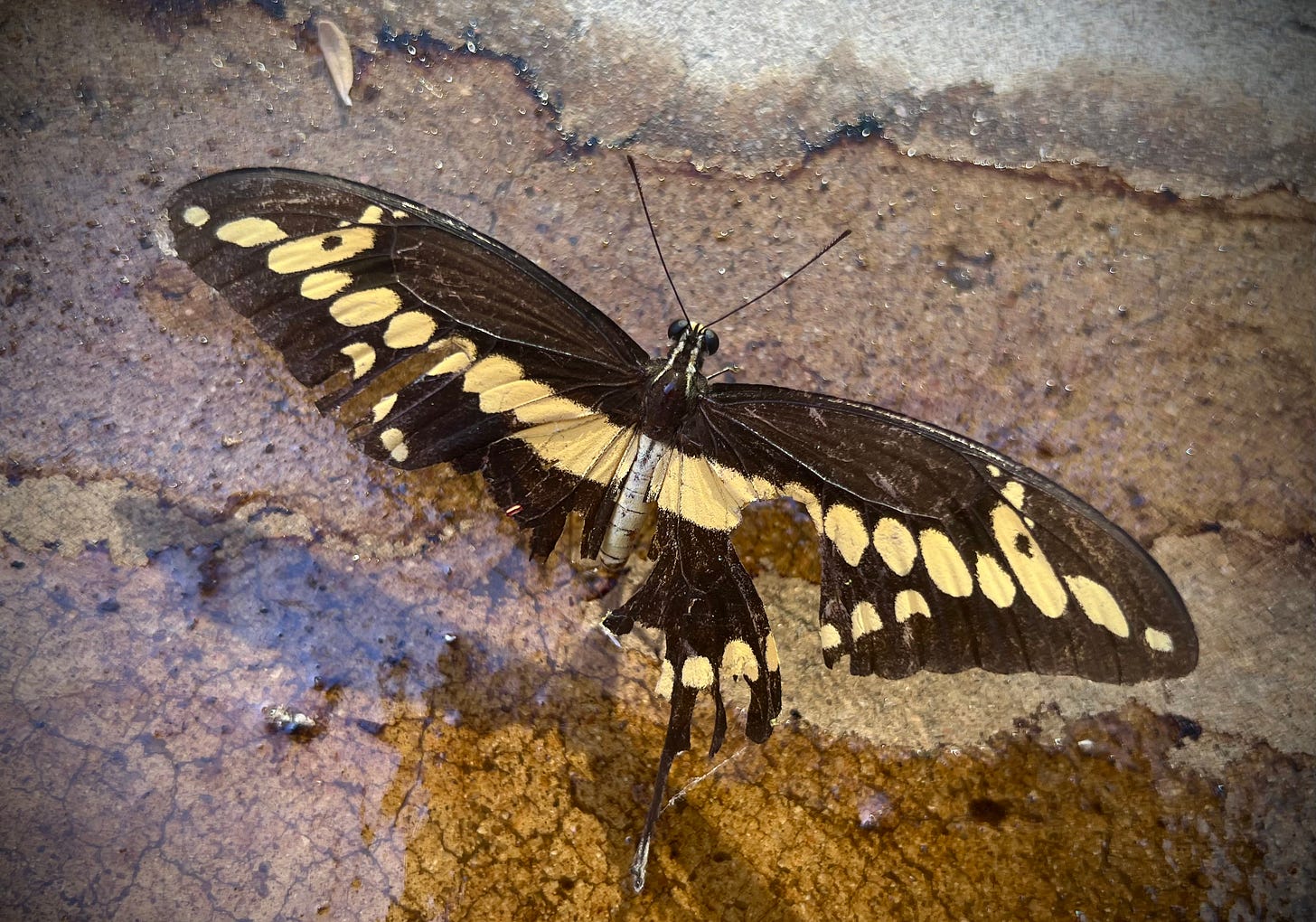
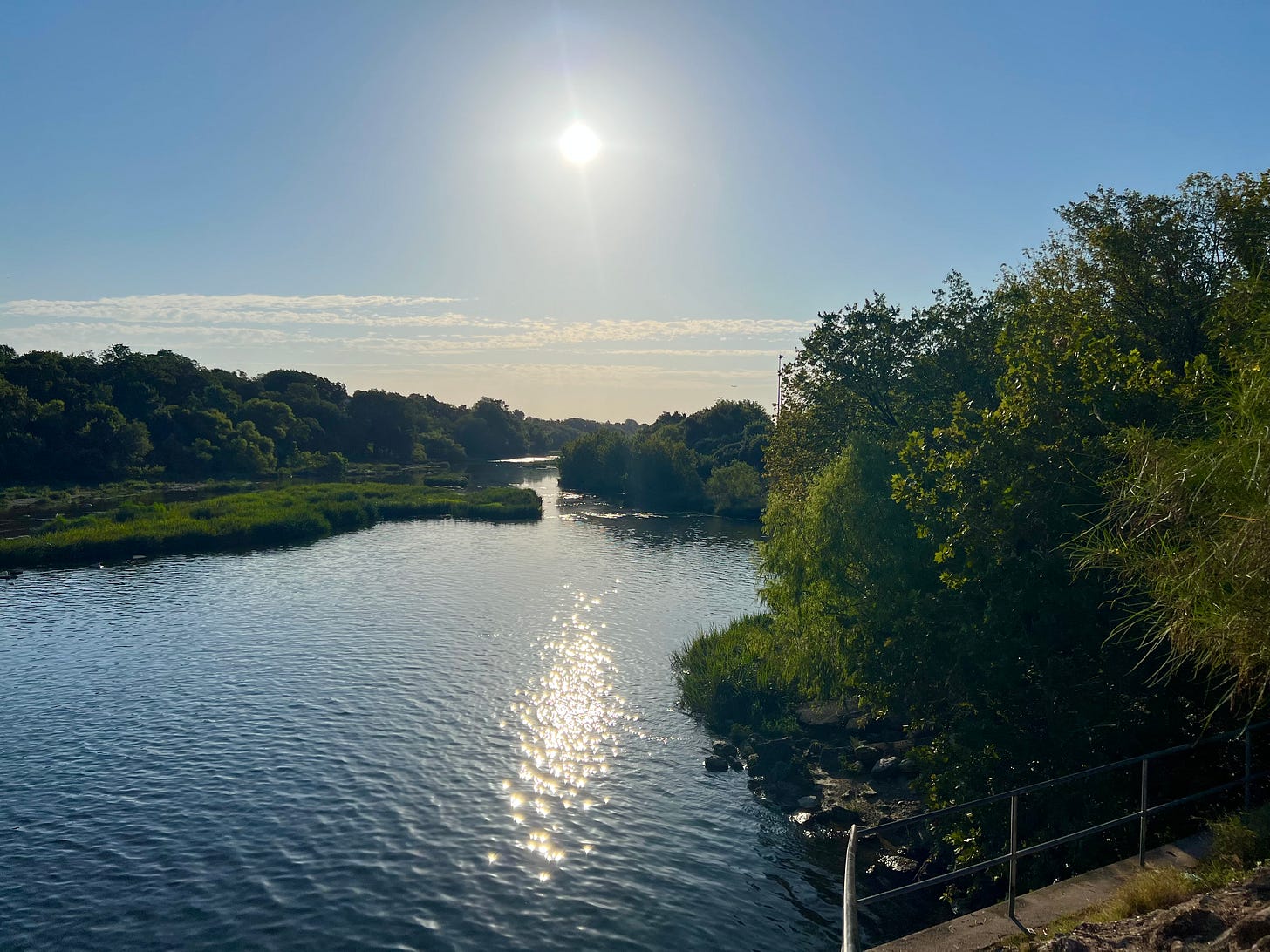


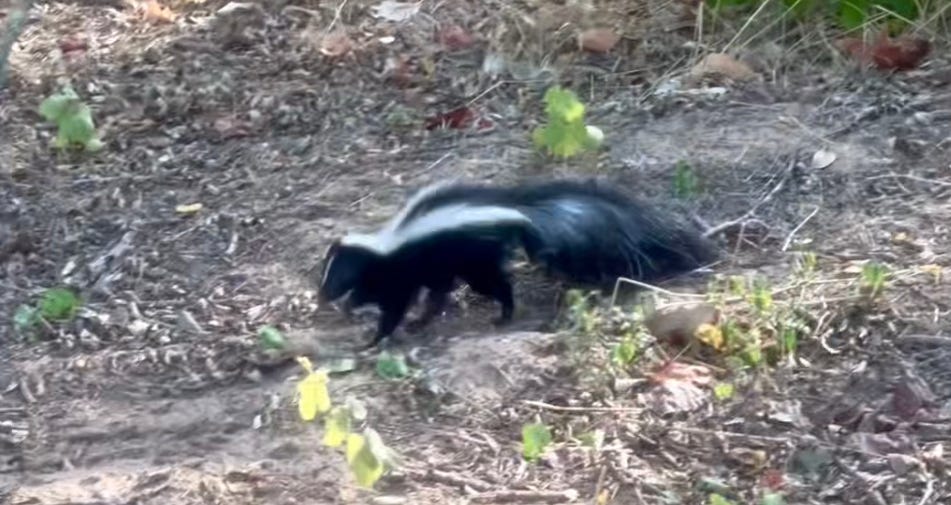
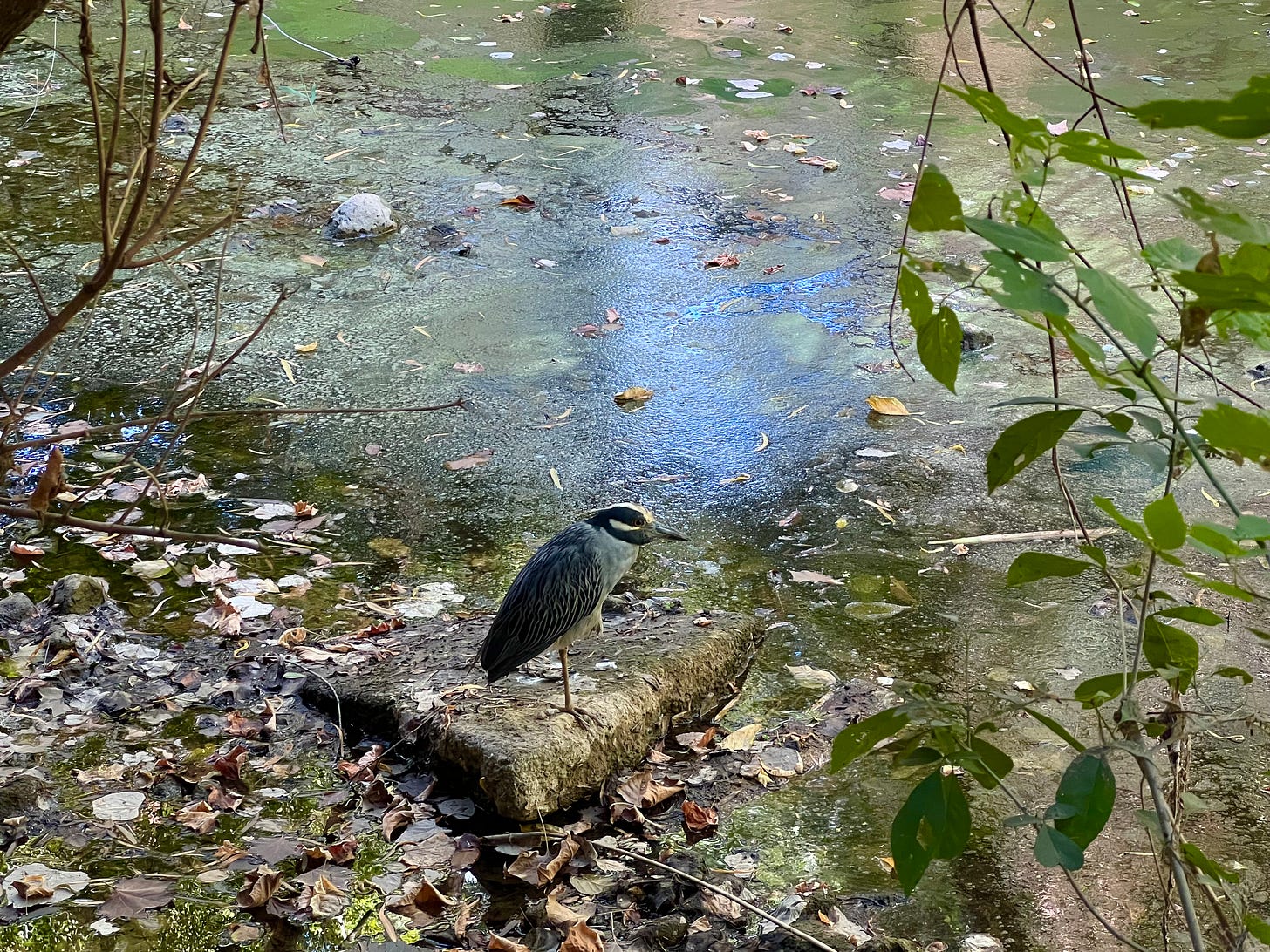

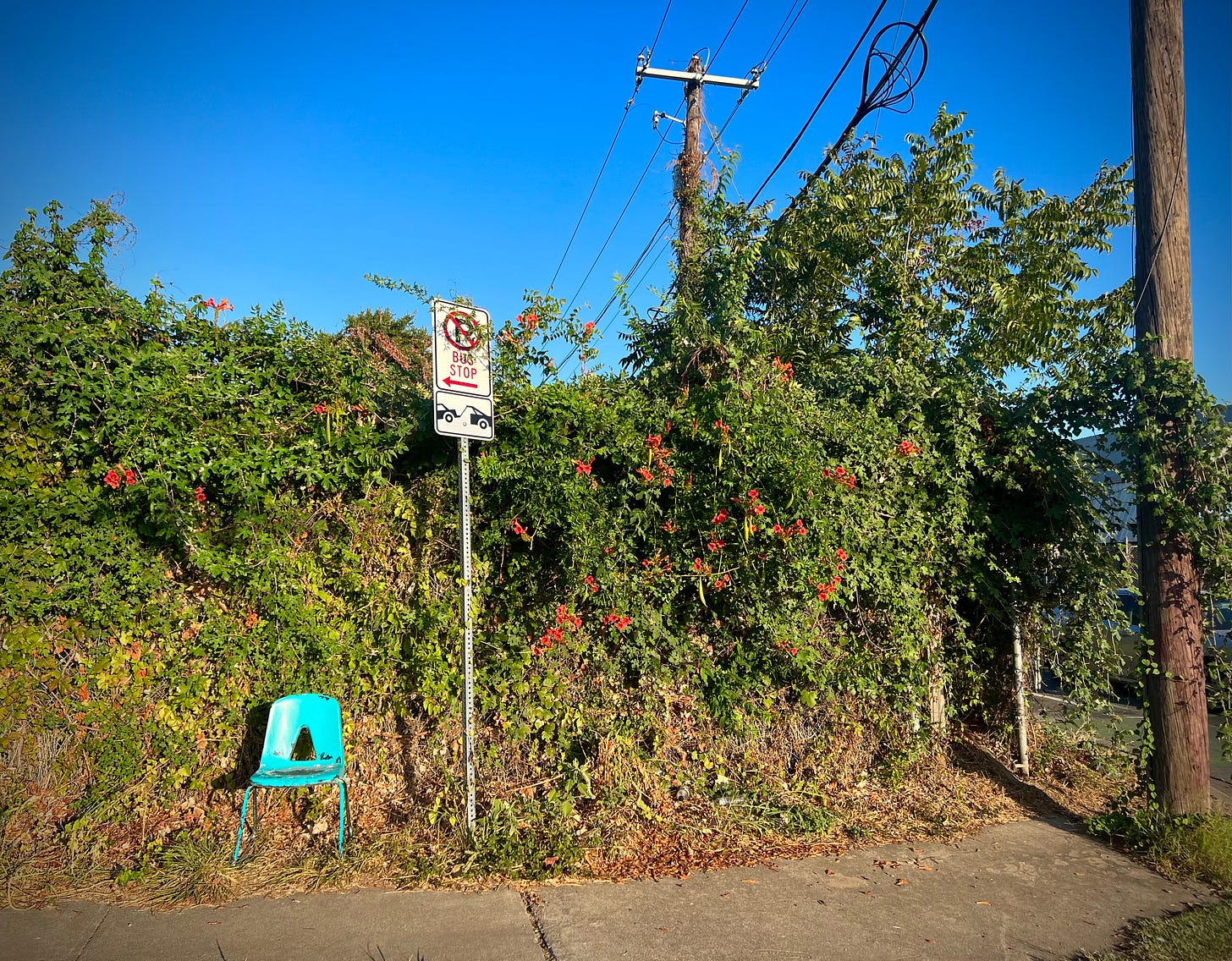

I have been thinking alot about my responsibility to the natual world and my participation, as a human, in its destruction. I watch the birds coming to our water feature with their beaks open panting from the heat The swallows trying so hard to raise 2 batches if young underneath the sweltering eaves of our porch, break my heart. Their perserverence is amazing.
that butterfly! I've never seen anything like it. (the purple one)
Our spaces are filled with predators and pollinators (and small prey)